Kent, Robert Edward (Flight Lieutenant)
Killed in Flying Accident 1951-April-19


Birth Date: 1921-October-16
Born: Macklin, Saskatchewan
Parents: Son of William and Effie Kent of Vancouver, British Columbia. Brother of William, Gordon, Marvin, Margaret, Dorothy, Maynard, Edna and Helen.
Spouse:
Home: Macklin, Saskatchewan
Enlistment: Vancouver, British Columbia
Enlistment Date: 1941-February-21
Service
RCAF
Unit
416 Sqn- Squadron
Ad Saltum Paratus Ready for the leap
Base
Rank
Flight Lieutenant
Position
Pilot
Service Numbers
27089
Mustang serial: 9242
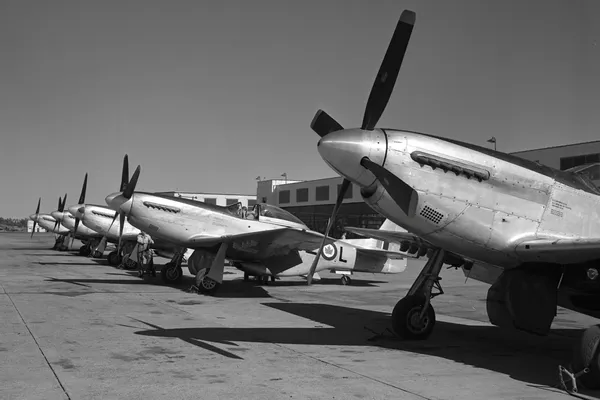
North American Mustang Mk. IV, RCAF (Serial No. 9253), coded BA-S,
No. 424 Squadron, Hamilton, Ontario
Chris Charland noted that the Mustang in the forefront is former USAF P-51D (Serial No. 44-74502A).
The North American Aviation P-51 Mustang is an American long-range, single-seat fighter and fighter-bomber used during World War II and the Korean War, among other conflicts. The Mustang was designed in April 1940 by a team headed by James Kindelberger of North American Aviation (NAA) in response to a requirement of the British Purchasing Commission. The Purchasing Commission approached North American Aviation to build Curtiss P-40 fighters under license for the Royal Air Force (RAF). Rather than build an old design from another company, North American Aviation proposed the design and production of a more modern fighter. The prototype NA-73X airframe was rolled out on 9 September 1940, 102 days after the contract was signed, and first flew on 26 October
The Mustang was designed to use the Allison V-1710 engine, which had limited high-altitude performance in its earlier variants. The aircraft was first flown operationally by the RAF as a tactical-reconnaissance aircraft and fighter-bomber (Mustang Mk I). Replacing the Allison with a Rolls-Royce Merlin resulted in the P-51B/C (Mustang Mk III) model, and transformed the aircraft's performance at altitudes above 15,000 ft (4,600 m) (without sacrificing range), allowing it to compete with the Luftwaffe's fighters. The definitive version, the P-51D, was powered by the Packard V-1650-7, a license-built version of the two-speed, two-stage-supercharged Merlin 66, and was armed with six .50 caliber (12.7 mm) AN/M2 Browning machine guns.
Canada had five squadrons equipped with Mustangs during the Second World War. RCAF Nos. 400, 414 and 430 Squadrons flew Mustang Mk. Is (1942"“1944) and Nos. 441 and 442 Squadrons flew Mustang Mk. IIIs and Mk. IVAs in 1945. Wikipedia and Harold Skaarup web page
Unit Desciption
416 Sqn Ad Saltum Paratus ("City of Oshawa")
History of the Squadron during World War II (Aircraft: Spitfire Mks. IIA, IIB, VB, VC, IX, IXB, XIVE, XVI)
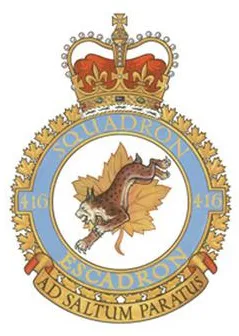
No. 416 Squadron was the 15th RCAF squadron formed overseas in WWII. It was the sixth fighter squadron, and was formed at Peterhead, Scotland ![]() on 22 November 1941. The unit flew Supermarine Spitfire aircraft of various marks as part of the defence of Great Britain, and also undertook offensive operations into Europe. The squadron formed part of the Second Tactical Air Force. After D-Day, the squadron moved to France on June 16, 1944 and thereafter moved with the land forces through France, the Low Countries and Germany, as a fighter and ground attack unit. After the termination of hostilities, the squadron remained in Germany as part of the British Air Forces of Occupation until it was disbanded at Utersen, Germany
on 22 November 1941. The unit flew Supermarine Spitfire aircraft of various marks as part of the defence of Great Britain, and also undertook offensive operations into Europe. The squadron formed part of the Second Tactical Air Force. After D-Day, the squadron moved to France on June 16, 1944 and thereafter moved with the land forces through France, the Low Countries and Germany, as a fighter and ground attack unit. After the termination of hostilities, the squadron remained in Germany as part of the British Air Forces of Occupation until it was disbanded at Utersen, Germany ![]() on 21 March 1946.
on 21 March 1946.
In the course of hostilities, the squadron claimed 75 enemy aircraft destroyed, 3 probables and37 damaged, for the loss of 42 aircraft and 35 pilots, of whom 19 were killed or missing, 13 were POW (1 escapee) and 1 evaded capture. In the ground attack role, the squadron destroyed 286 motor vehicles, 13 locomotives and other miscellaneous targets. Two of the pilots (Flight Lieutenant D.E. Noonan, DFC and Squadron Leader F.H. Boulton, DFC) were aces with at least 5 enemy aircraft shot down. Awards to squadron personnel were 1 Bar to DFC, 11 DFCs, 1 DFM, 1 DFC (USA) and 1 Flying Cross (Netherlands). Battle Honours were: Defence of Britain 1942-44, English Channel and North Sea 1943, Fortress Europe 1942-44, Dieppe, France and Germany 1944-45, Normandy 1944, Arnhem, Rhine.
Maps for Movements of 416 Squadron 1941-46
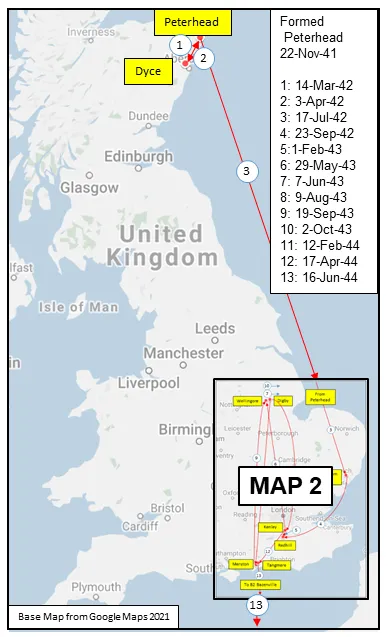
MAP 1: 416 Squadron Movements in Britain 1941-44 (right-click on image to display enlarged in new tab)
|
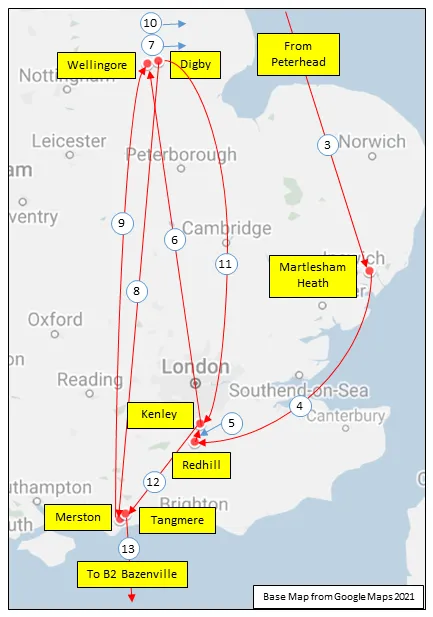
MAP 2: 416 Squadron Movements in Britain: Detail of Map 1
|
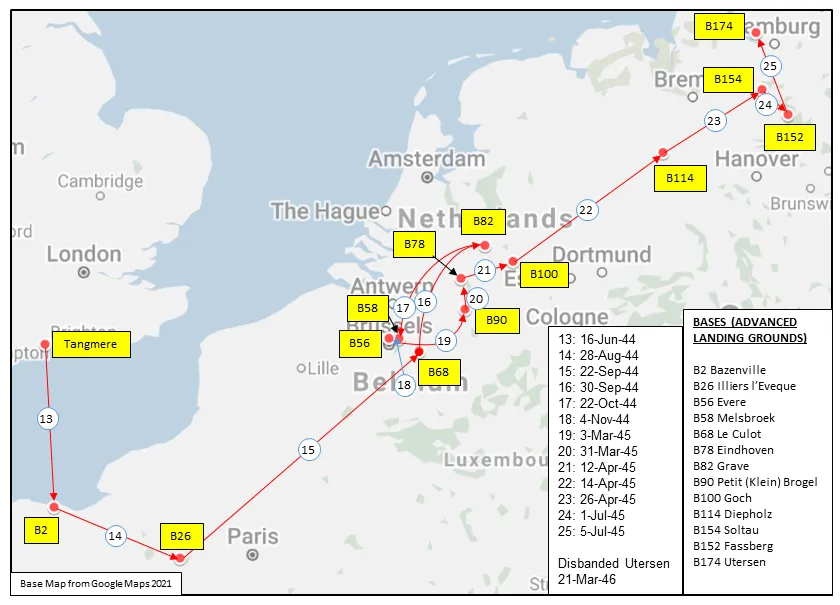
MAP 3: 416 Squadron Movements in Europe 1944-46
|
416 Squadron History Summary 1941-45
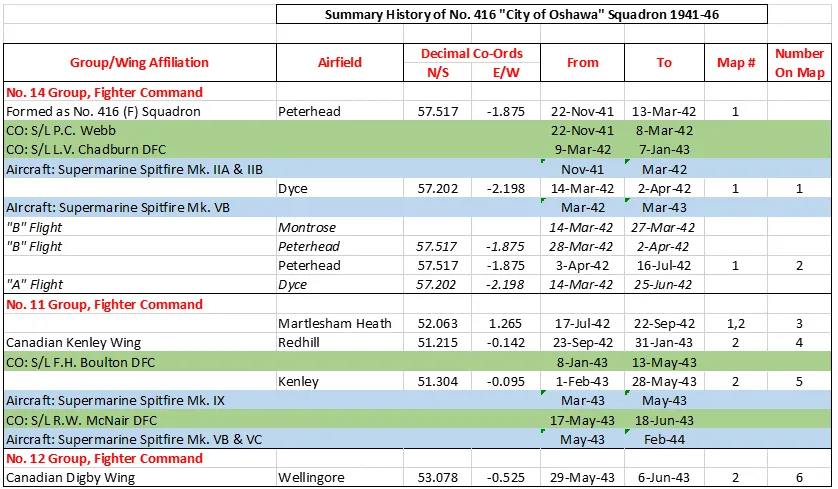
416 Squadron History Summary 1941-45 Page 2
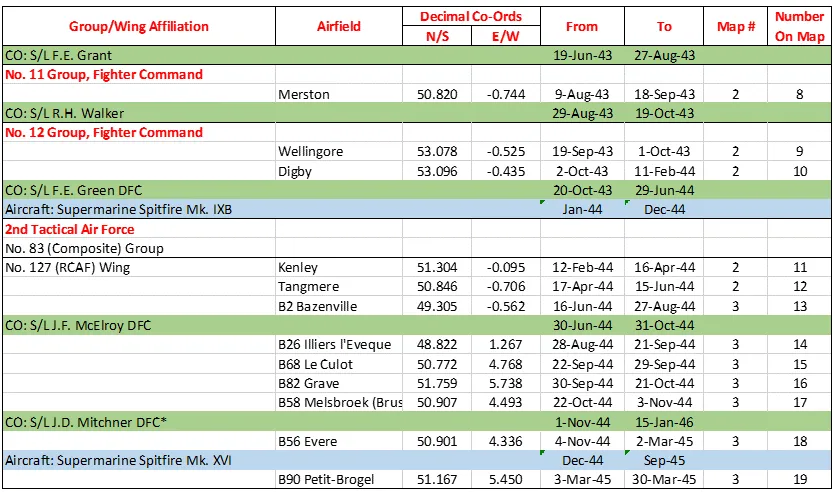
416 Squadron History Summary 1941-45 Page 3

History of the Squadron Post-WWII (Aircraft: Mustang, Sabre Mk 2, 5, 6, Canuck, Voodoo, Hornet)
The squadron was re-formed as a Fighter unit at Uplands, Ontario ![]() on 8 January 1951 with Mustang and, later, Canadair Sabre aircraft of different marks. The squadron joined No. 2 (Fighter) Wing at Grostenquin, France
on 8 January 1951 with Mustang and, later, Canadair Sabre aircraft of different marks. The squadron joined No. 2 (Fighter) Wing at Grostenquin, France ![]() in September 1952. In 1956, it was decided to replace one Sabre squadron in each of No. 1 Air Division Europe’s four wings with an all-weather fighter unit. When No. 423 AW(F) Squadron arrived from Canada, No. 416 was deactivated on 31 January 1957 and reactivated as All-Weather (Fighter) at St Hubert, Quebec
in September 1952. In 1956, it was decided to replace one Sabre squadron in each of No. 1 Air Division Europe’s four wings with an all-weather fighter unit. When No. 423 AW(F) Squadron arrived from Canada, No. 416 was deactivated on 31 January 1957 and reactivated as All-Weather (Fighter) at St Hubert, Quebec ![]() on 1 February, and flew Avro Canada CF-100 (Canuck) aircraft on North American air defence. Pending re-equipment with CF-101 (Voodoo) aircraft, the unit was again deactivated on 1 September 1961. Reactivated at Bagotville, Quebec
on 1 February, and flew Avro Canada CF-100 (Canuck) aircraft on North American air defence. Pending re-equipment with CF-101 (Voodoo) aircraft, the unit was again deactivated on 1 September 1961. Reactivated at Bagotville, Quebec ![]() on 1 January 1962, it subsequently moved to Chatham, New Brunswick
on 1 January 1962, it subsequently moved to Chatham, New Brunswick ![]() in November, where it flew the interceptor until the end of 1984. 416 Squadron thus became the world's last front-line unit flying Voodoos. In 1988 the squadron relocated to CFB Cold Lake as a Tactical Fighter Squadron flying McDonnell-Douglas CF-18s (Hornet), and later merged with 441 Tactical Fighter Squadron to re-form No. 409 Tactical Fighter Squadron in 2006.
in November, where it flew the interceptor until the end of 1984. 416 Squadron thus became the world's last front-line unit flying Voodoos. In 1988 the squadron relocated to CFB Cold Lake as a Tactical Fighter Squadron flying McDonnell-Douglas CF-18s (Hornet), and later merged with 441 Tactical Fighter Squadron to re-form No. 409 Tactical Fighter Squadron in 2006.